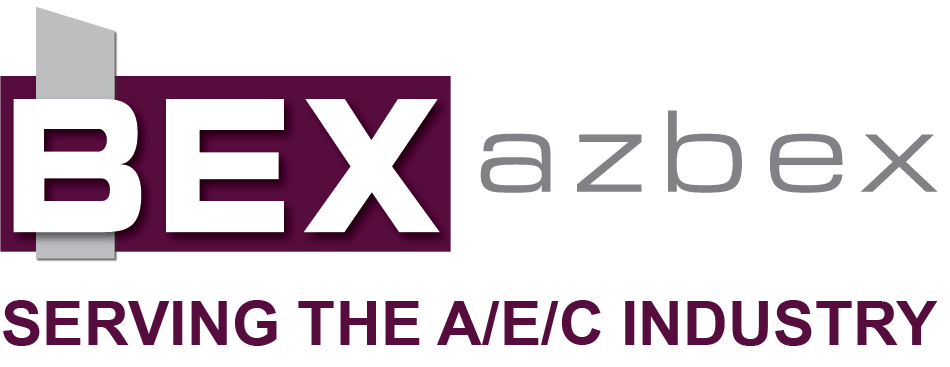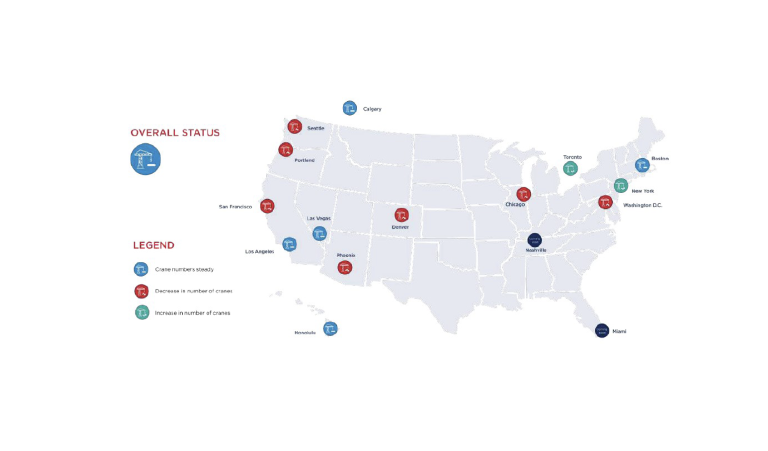By Roland Murphy for AZBEX
With an annual percent change of 4.18%, Phoenix ranked seventh for annual percent change in construction costs across the 14 cities tracked through the end of Q1.
Rider Levett Bucknall’s “First Quarter 2025 North America Quarterly Construction Cost Report” shows Los Angeles had the lowest percent change at 3.58%. The greatest changes were seen in Honolulu and Chicago, with 5.37% and 5.47%, respectively.
The average national increase in construction costs was 0.98%, which is a modest drop from Q4 2024’s 1.11%. The year-over-year rate fell to 4.35%, down from 5.86% last year.
Phoenix’s Comparative Cost Index percentages across 2024 and into 2025 were:
- Q2 2024: 0.94%;
- Q3 2024: 1.02%;
- Q4 2024: 1.27%, and
- Q1 2025: 0.89%.
Key data points from the report show:
- The U.S. quarterly national average increase in construction cost is approximately 1.11% and 4.69% year-over-year.
- The construction unemployment rate at the end of Q4 was 5.2%, up from 4.4% in the same time period for 2023. The national unemployment rate also increased, reaching 4.2% in Q4 2024 versus 3.8% at the end of 2023.
- The Architectural Billings Index showed modest improvement to start the year, showing a potential increase in design activity and indicating improved project pipelines may come later in 2025.
In his report introduction message, RLB President, North America, Paul Brussow cautioned against joining in the hysteria over tariffs as reported in the general interest news. “Contrary to alarming media narratives about potential tariff wars and inflation spikes, our research and insight paint a more measured picture of the current landscape.”
He went on to say, “Despite the extensive news coverage on tariffs, the economic shifts have not yet significantly affected construction project costs. While certain construction materials— such as stamped steel for automotive and aerospace manufacturing, lumber from Canada, and fuel for transportation—might experience effects due to tariffs, these changes are expected to impact overall construction costs in nominal ways.
“There has been considerable confusion and speculation regarding the current tariff situation. Looking back to 2018, when tariffs were being used as a negotiating tool, they only marginally impacted certain materials. That experience, combined with our current research and insights, helps us focus our attention on a few key points regarding the current tariffs.
“Approximately 70% of construction materials are sourced domestically, insulating much of the industry from direct tariff impacts. Even for imported materials, tariffs will not raise project costs by the percentage rates reported in the news; material costs represent only a fraction of overall construction and project costs, and tariffs typically apply to only a portion (of a portion) of those materials.”
Brussow reminded readers the greatest challenge facing the industry remains labor costs. Wages continue to rise at a faster rate than in previous years, and changes in immigration policy are expected to reduce the available skilled labor pool. As availability decreases, competition and demand will increase, which will lead to higher labor costs and, consequently, construction costs.
Cranes
The national count in the Q1 2025 RLB Crane Count Index held steady. Even though half of the 14 markets surveyed reported decreases of more than 20%, high rates of activity in key markets—particularly in residential and mixed-use developments—prevented the overall index from falling.
According to the summary, “The 2025 first quarter crane count holds steady, reflecting the market’s overall hesitation to move forward with major construction projects due to economic uncertainty. Interest rates have declined, and the rate of construction cost increases has slowed since the previous issue.”
Phoenix was among the markets showing decreases, with five cranes operating in Q1, compared to seven in Q1 2024.
The activity summary for Phoenix reports: “Many of the mixed-use projects from the previous count are nearing completion and have removed their cranes. Several new cranes have appeared that are likely for residential/mixed-use developments, though specific details remain limited. A notable addition is The Edith, a new 17-story hotel under construction that will encompass 180KSF upon completion.”

